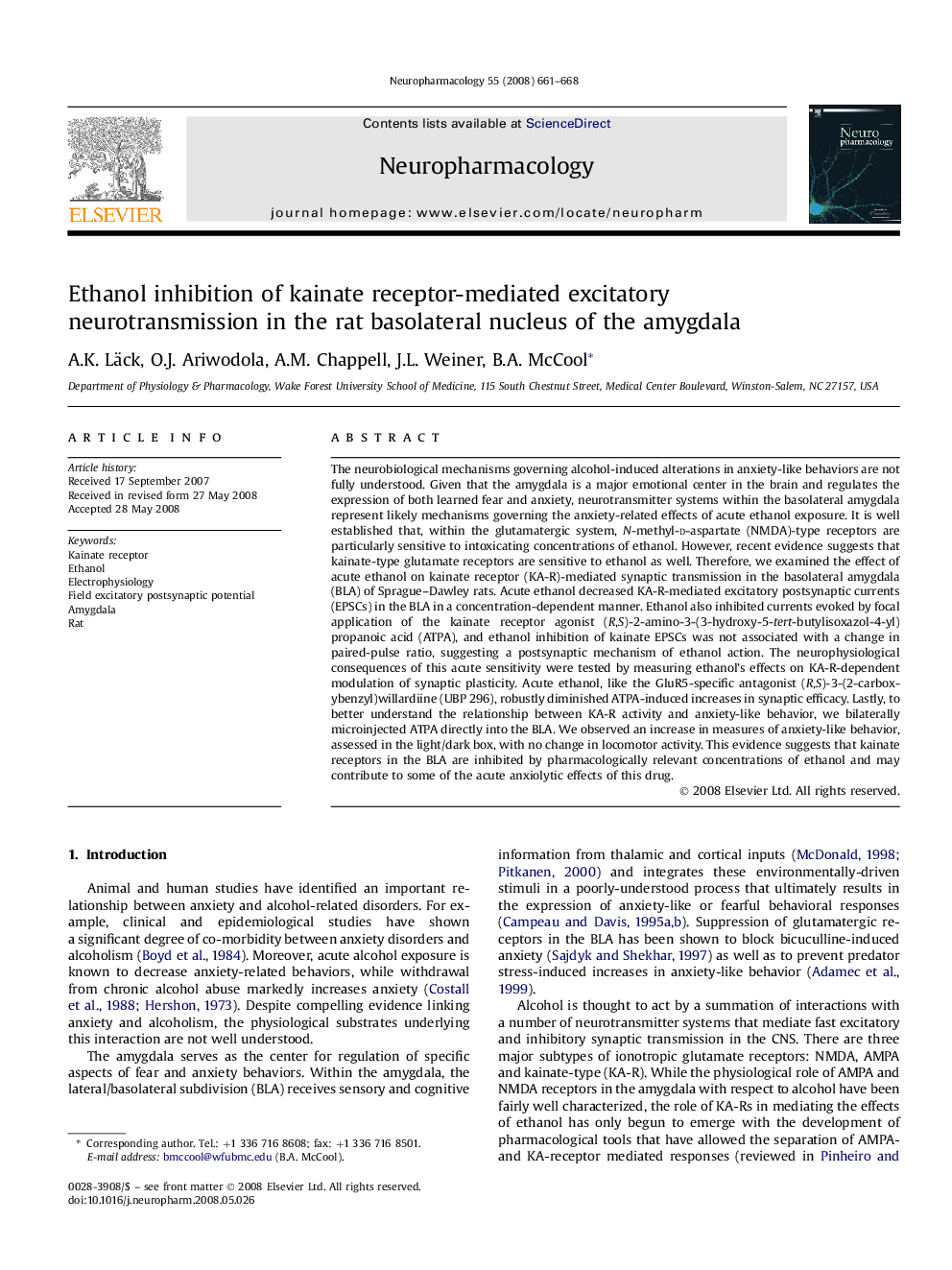| کد مقاله | کد نشریه | سال انتشار | مقاله انگلیسی | نسخه تمام متن |
|---|---|---|---|---|
| 2494610 | 1115572 | 2008 | 8 صفحه PDF | دانلود رایگان |

The neurobiological mechanisms governing alcohol-induced alterations in anxiety-like behaviors are not fully understood. Given that the amygdala is a major emotional center in the brain and regulates the expression of both learned fear and anxiety, neurotransmitter systems within the basolateral amygdala represent likely mechanisms governing the anxiety-related effects of acute ethanol exposure. It is well established that, within the glutamatergic system, N-methyl-d-aspartate (NMDA)-type receptors are particularly sensitive to intoxicating concentrations of ethanol. However, recent evidence suggests that kainate-type glutamate receptors are sensitive to ethanol as well. Therefore, we examined the effect of acute ethanol on kainate receptor (KA-R)-mediated synaptic transmission in the basolateral amygdala (BLA) of Sprague–Dawley rats. Acute ethanol decreased KA-R-mediated excitatory postsynaptic currents (EPSCs) in the BLA in a concentration-dependent manner. Ethanol also inhibited currents evoked by focal application of the kainate receptor agonist (R,S)-2-amino-3-(3-hydroxy-5-tert-butylisoxazol-4-yl) propanoic acid (ATPA), and ethanol inhibition of kainate EPSCs was not associated with a change in paired-pulse ratio, suggesting a postsynaptic mechanism of ethanol action. The neurophysiological consequences of this acute sensitivity were tested by measuring ethanol's effects on KA-R-dependent modulation of synaptic plasticity. Acute ethanol, like the GluR5-specific antagonist (R,S)-3-(2-carboxybenzyl)willardiine (UBP 296), robustly diminished ATPA-induced increases in synaptic efficacy. Lastly, to better understand the relationship between KA-R activity and anxiety-like behavior, we bilaterally microinjected ATPA directly into the BLA. We observed an increase in measures of anxiety-like behavior, assessed in the light/dark box, with no change in locomotor activity. This evidence suggests that kainate receptors in the BLA are inhibited by pharmacologically relevant concentrations of ethanol and may contribute to some of the acute anxiolytic effects of this drug.
Journal: Neuropharmacology - Volume 55, Issue 5, October 2008, Pages 661–668